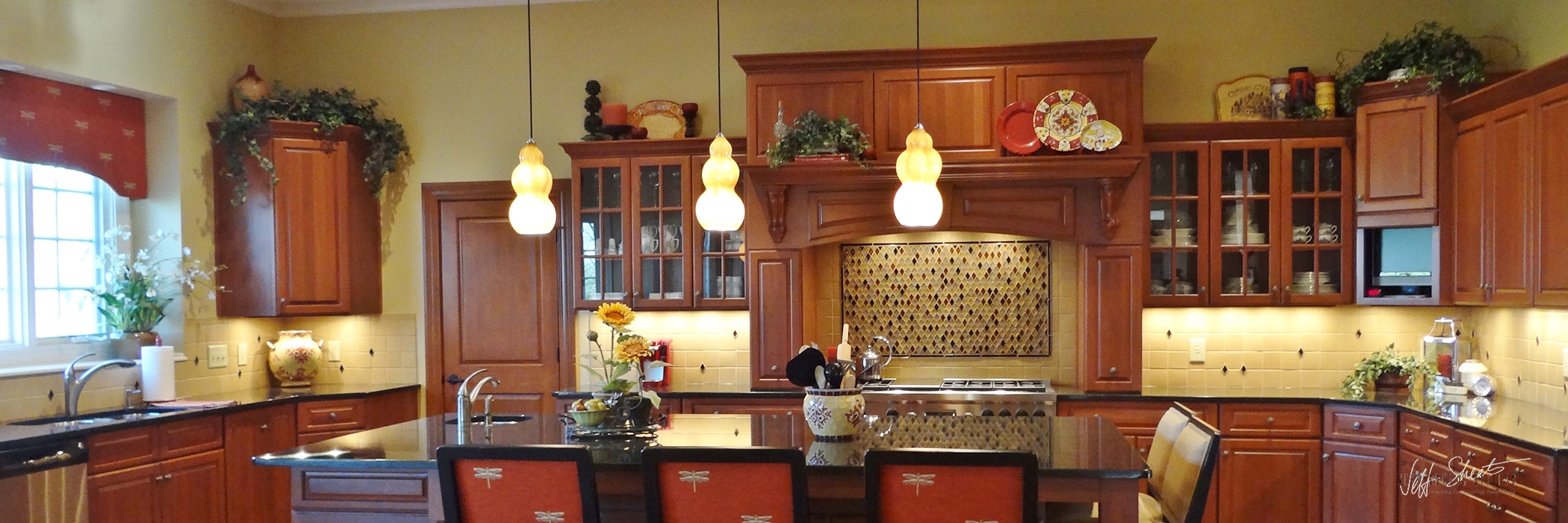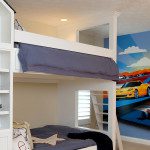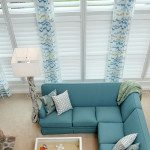Residential Lighting Mistakes to Avoid
Light is simply “visual radiation”. It comes from energy or electromagnetic waves that stimulate the photoreceptors in our eyes. Once you understand human vision, designers apply this knowledge to help the human user of the space see effectively and comfortably. People must be able to see their tasks well in workspaces like a kitchen or home office, and enjoy typical living situations like movement through a space, cooking, reading a magazine or playing board games with the family.
Professional interior and lighting designers consider many scientific aspects when formulating a great lighting plan for your spaces. We inventory your existing conditions, including measuring the volume of the space, note the spatial forms like curves or long narrow rooms and look at how the space will be used. We consider the visual tasks that will take place in the room, the occupant’s ages, furnishings, surface finishes, existing lighting, your feedback and we make our own impressions. Your designers continue the scientific analysis of spaces by considering the quality of daytime versus night lighting, the reflective values of surfaces, foot candle luminance limits (how much light on a plane of space is needed to complete a task), local/state/national building codes, and perform specific lighting calculations to determine proper quantity of lighting. We consider the type of lamp (light bulb), the luminaire (fixture) itself and the controls which will be used for the lighting as well.
The artistic side of lighting includes the final fixture locations and specifications – the aesthetics, the feeling the fixtures evoke, the finish and the function. Deciding upon which precise luminaires will be controlled by a dimmer or on a circuit together can certainly add to the artistic feeling of a space.
There are common mistakes when striking lighting in our homes that waste energy and do not get the light where it is needed. I see these errors repeated again in new construction and remodels because most people are not sure how to light spaces within our homes well. Knowing what NOT to do can make you look like a pro so here are a few common lighting mistakes to avoid:
Mistake #1: Forgetting to deploy ambient, accent and task lighting. For every homeowner, professional interior designers address three major aspects of lighting: Ambient, Accent and Task. Ambient lighting is most easily defined as “path lighting” to light your foot path as you move about a space which can include landscape lighting as well. Accent lighting is just that – lighting that accents certain features of a space such as lighting on a piece of artwork or lighting that washes some special built-in cabinetry to “show it off”. Task lighting creates light on a work plane so the user may finish a specific task at hand, such as proper lighting on a desk to do paperwork without eye strain, or under cabinet lighting in a kitchen to promote perfect vision while prepping and cooking food for the family. Combining all three types of lighting gives you greater functionality, visual interest and the likelihood you will have sufficient lighting.
Mistake #2: Installing recessed can downlights everywhere. A builder-grade version of this common light is very inexpensive and many people just lay them out in a grid everywhere. The optics of these inexpensive can lights wastes energy by allowing only slightly more than half the lumen output to escape. Unless they are wall washers, they do not spread sufficient light on vertical surfaces where the eye perceives light. Improperly placed or specified with the wrong trims and lamps (light bulbs), they waste light and still leave spaces feeling empty. Not only do recessed cans not light homes well, they are a “me too” product that adds no design value to a space. Read on.
Mistake #3: Installing recessed can downlights in a high ceiling to create ambient light. As a continuation to mistake #2, this tactic results is lots of wasted light, energy and a very dark space. Lights which begins at a high ceiling needs to have a very tightly focused beam spread with enough center bear candle power (CBCP) such as a high wattage halogen source. You can upgrade your bulbs if you already have this condition to PAR halogen light bulbs with new white baffle trims, which will help. A better solution would be to install wall mounted or pendant light sources to reflect light off a pale, neutral color, matte-finished ceiling. Read on for one more typical mistake using recessed downlights.
Mistake #4: Using recessed can downlights over a vanity without any other lighting. Remember holding a flashlight up under your chin and seeing the shadows? This works in the opposite direction. Standing directly under a downlight creates exaggerated and unflattering shadows. Using a can over a sink in a bathroom is fine to highlight the modern, polished chrome lavatory faucets you’ve just installed, but it’s not proper lighting for shaving, tweezing or applying makeup. For this you’ll need lights at eye level installed on the mirror, flanking the mirror, or on the side walls to prevent shadowing. Decorative sconces will do the trick.
Mistake #5: Using lighting sources without dimming. While the world is evolving finding ways to retrofit our existing fixtures with lower energy, longer lasting sources of light versus incandescent, it is critical we also consider dimmability of the light sources. Dimming decreases energy used, heat output, lengthens the life of the light bulb and provides pleasant and efficient levels of light as our requirements change throughout the day and night. Many fine homes now employ whole house dimming systems, which reduce wall clutter and provide the upmost in convenience by creating scenic lighting for all functions in the household including the media room, kitchen and also the outdoors. But dimming takes thought and should control different types of light separately. Read on.
Mistake #6: Neglecting to control different types of light separately. Remember we need ambient, accent and task lighting for our spaces as appropriate? For maximum efficiency and flexibility, each type of light should be controlled independently. Controlling multiple sources of light can be as easy as putting each source on a separate dimming switch, or deploying a simple scenic system. In any case, controlling the multiple sources of light yields energy savings and allows you to combine the right types of light as your needs change throughout the day and night.
Mistake #7: Forgetting to include portable lighting fixtures in the design plan. Let us not forget a great interior lighting plan also always includes portable lighting such as lovely table, desk or floor lamps. Portable lighting can be greatly enhanced by specifying floor receptacles so the fixtures float in the room instead of dangerously running cords across path spaces. Portable lighting can also be specified to operate from switched receptacles so dimmers are used to control these fixtures and add drama to the room.
Mistake #8: Decorating with light. Professional interior and lighting designers think about light as an actual dimension in space, imagining the output from each fixture, the color and quality of light. Simply decorating with fixtures based alone on how they look rather than their performance often results in wasted energy and less than optimal light output. Consider hiring a professional to assist with proper lighting design specifications and plans. A creative designer takes great pride in their ability to specify beautiful and proper fixtures, and then prepare detailed construction documentation for proper lighting implementation by the builder or remodeler as well. Great lighting documentation includes detailed drawings of the spaces with existing and new lighting plans, and can save money on remodeling by specifying to reuse existing wiring wherever practical.
Our best kept interior designer lighting secret: We always space plan furniture, artwork and built-in millwork plans first, and then create the lighting plan accordingly. This will achieve the very best architectural lighting plans for you and your family to enjoy for years to come.
Please feel free to contact us via telephone at (317) 357-0155 with any questions about this material or to request more information about our services. Visit the It’s YouTM section on our website at www.jeffsheatsdesigns.com to learn more about the Jeff Sheats Designs, Inc. interior design process. We are your partners in interior design!



